Applying stain to your new deck at the right time is essential for both appearance and longevity. If you’re questioning ‘when is the right time to stain your new deck,’ anticipate a general wait of several weeks to months, varying with wood type and conditions. This guide will help you pinpoint the optimal time frame for your deck, ensuring you achieve a professional-quality finish without premature wear.
Key Takeaways
- The appropriate time to stain a new deck is dependent on the type of wood, with pressure-treated wood needing 3-6 months to dry, kiln-dried lumber requiring a few weeks to adjust to the local environment, and green lumber taking 6 months to a year.
- Ideal weather conditions for staining a deck include temperatures between 50-90 degrees Fahrenheit, low humidity levels, and an absence of rain both before and after application for optimal stain adhesion and drying.
- Proper deck preparation involves cleaning, sanding, and mildew treatment, while maintenance should include regular restaining every 2-3 years or as indicated by signs of wear, and professional assistance can ensure quality application and longevity.
Understanding Your New Deck’s Wood Type
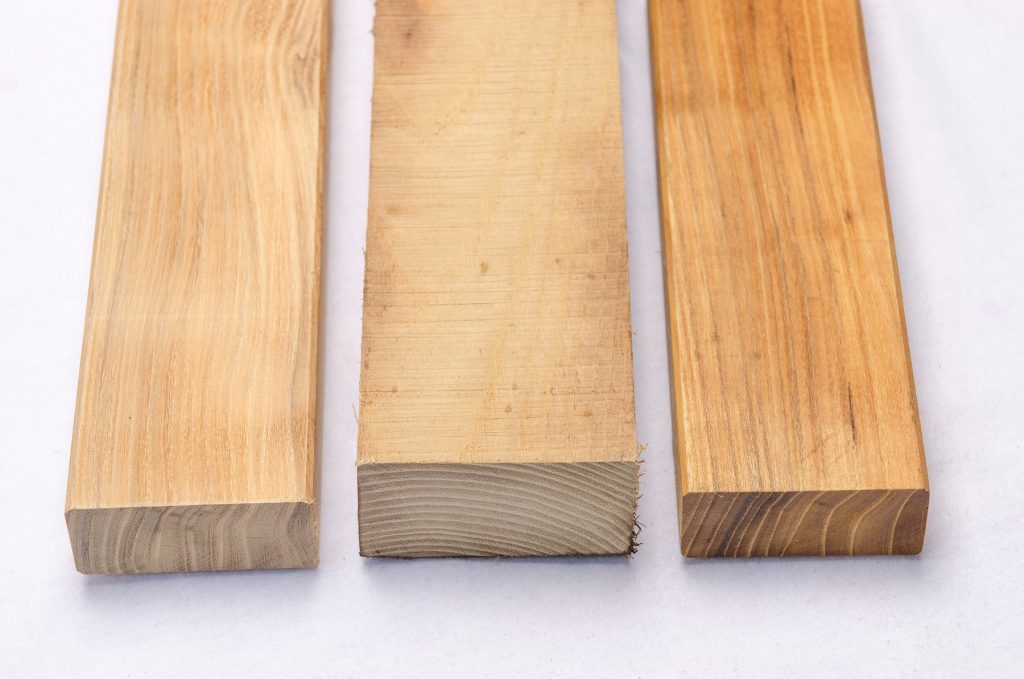
When it comes to staining a new deck, not all wood is created equal. The type of wood your deck is made from significantly influences the timing of the first staining. Whether your deck is built from pressure-treated lumber, kiln-dried lumber, or green lumber, each material comes with its unique properties and drying times.
The first step in determining the right staining time is to understand your new deck’s wood type. Depending on the type of wood and its characteristics, the typical waiting period before staining a new deck is between 4-8 weeks. Keep in mind this is a general guideline, as each type of wood has its specific needs.
Pressure-treated wood
Among the different types of wood, pressure-treated lumber is a popular choice due to its durability and resistance to decay and pests. However, this type of wood requires a longer drying period before staining, which can create a problem for those in a hurry to complete their projects.
Pressure-treated wood should be allowed to dry for 3-6 months to ensure proper absorption of the stain. During this period, the lumber releases moisture and acclimates to the outdoor environment, thus preparing it for a successful staining process.
Kiln-dried lumber
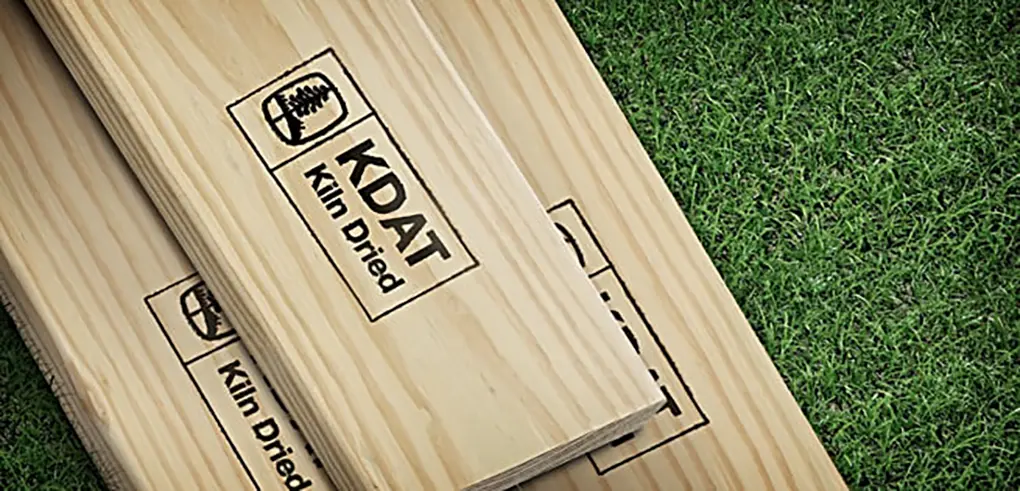
Kiln-dried lumber is another common choice for deck construction. This type of lumber undergoes a process of drying in a kiln, which reduces the moisture content to a target level conducive to staining.
Although kiln-dried lumber may be ready for staining shortly after the drying process, waiting a few weeks to months for the wood to acclimate to the local environment is recommended. This delay helps to ensure a proper adhesion of the stain and its longevity.
Green lumber
Green lumber, often sourced from a lumber yard, is freshly cut new wood with high moisture content. It requires the most time to dry before it is suitable for staining.
Green lumber’s drying time can vary, with a general guideline suggesting to wait at least 6 months to a year, contingent on the wood’s exposure to sun and wind. Such a long drying period enables the lumber to attain its equilibrium moisture content, crucial for successful staining.
Weather Considerations for Staining
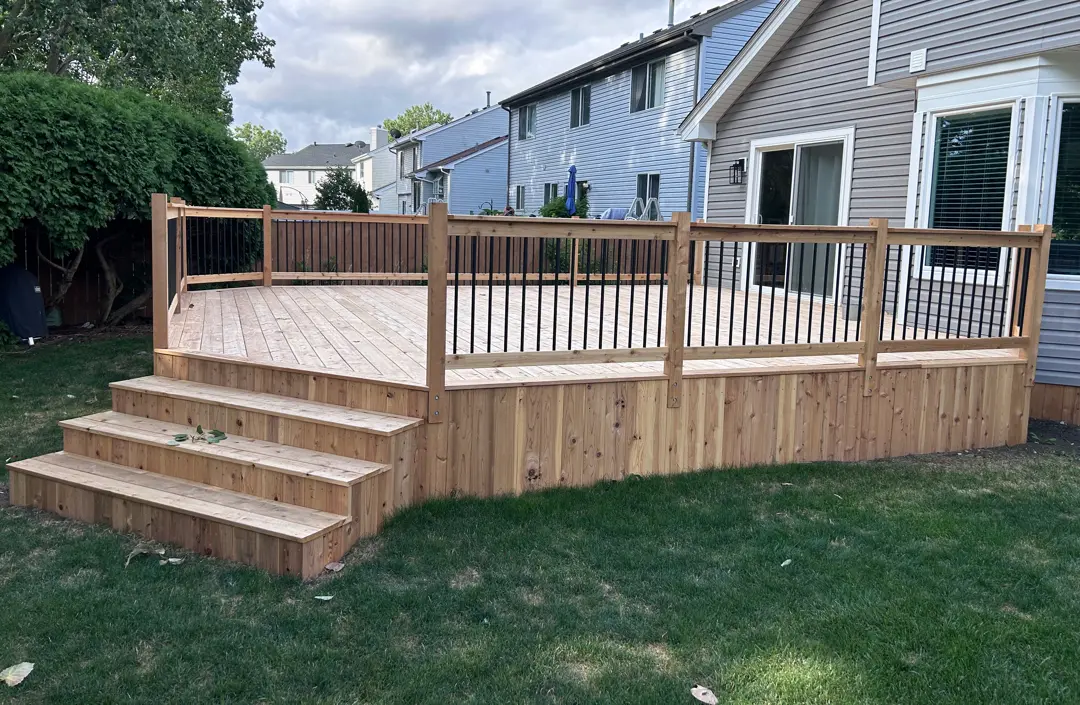
Weather conditions become the next crucial factor once your deck is dry and ready for staining. The ideal staining conditions are between 50-90 degrees Fahrenheit, with dry weather and low-to-average humidity.
Ensure the deck is dry and not exposed to rain for several days before staining, and the forecast predicts at least two more days of dry weather. Conditions such as direct sunlight, high humidity, imminent rain, and strong winds should be avoided. These conditions could cause complications like flash drying, extended stain-dry time, washing away of the stain, and debris sticking to the wet stain.
Preparing Your New Deck for Staining
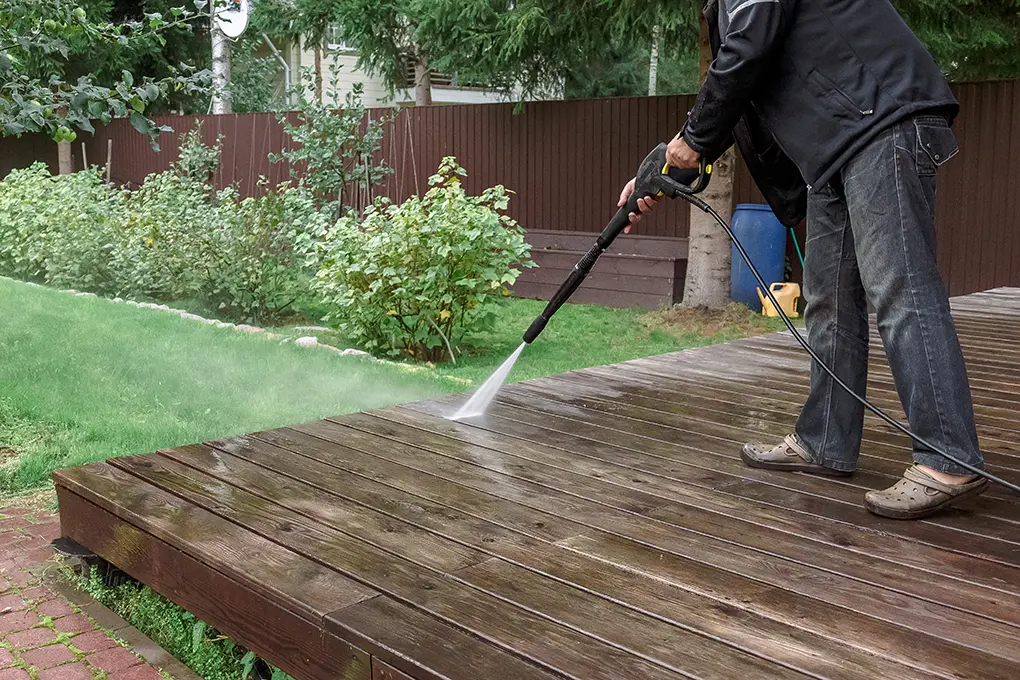
Your new deck requires a bit of prep work to ensure proper stain adhesion before you can commence staining. The preparation includes sweeping, cleaning, sanding, and treating any mildew on the deck boards. When it comes to new decks, it’s essential to follow these steps for the best results, just as you would with an old deck.
Start the preparation by sweeping the surface to get rid of leaves, debris, or loose particles. Subsequently, use a quality deck cleaner or a light pressure washing to eliminate dirt and any stains.
Post-cleaning, sand the deck to eliminate any mill glaze and ascertain proper stain adherence. If the deck has mildew due to high humidity, treat it with a bleach solution or specialized cleaner.
Choosing the Right Deck Stain
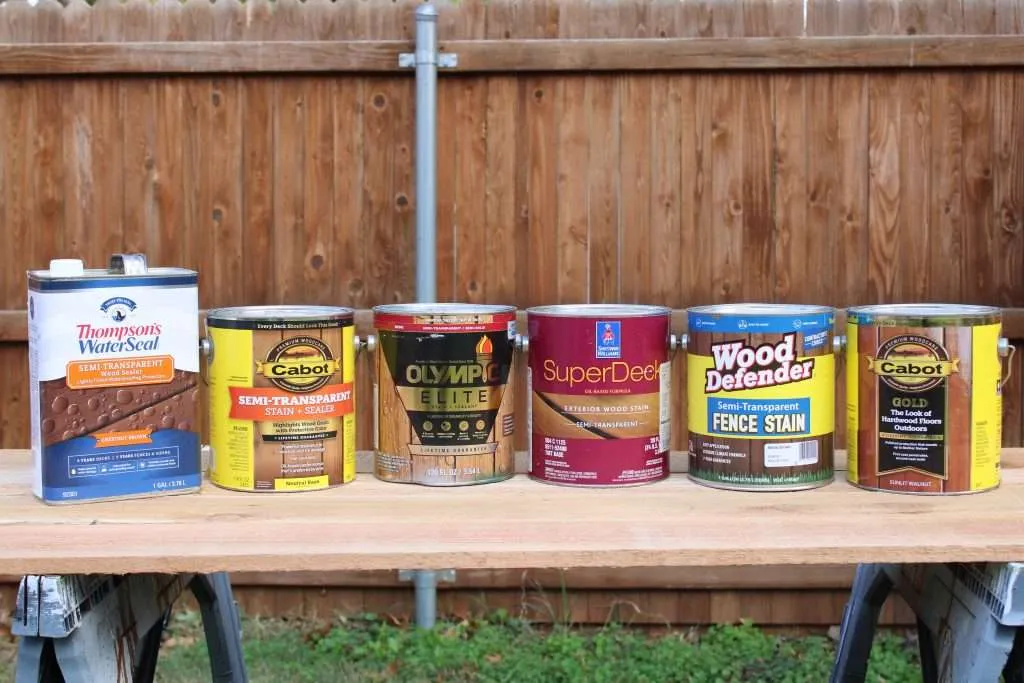
To choose the right stain for your deck, you must consider factors like:
- Transparency
- Protection
- Eco-friendliness
- Viscosity
The right stain will not only enhance the appearance of your deck but also prolong its lifespan.
There are three types of stains you can choose from for your deck:
- Transparent stains enhance the natural wood grain and color but provide light water repellency and limited UV protection.
- Semi-transparent stains: Also known as semi-solid stains, these offer enhanced protection against the elements and typically require reapplication every two to four years. They provide superior protection and waterproofing for new and older decks.
- Solid-colored stains: These provide the highest level of UV protection and are designed to sit on top of the wood, making them suitable for older decks with imperfections.
Staining Process and Techniques
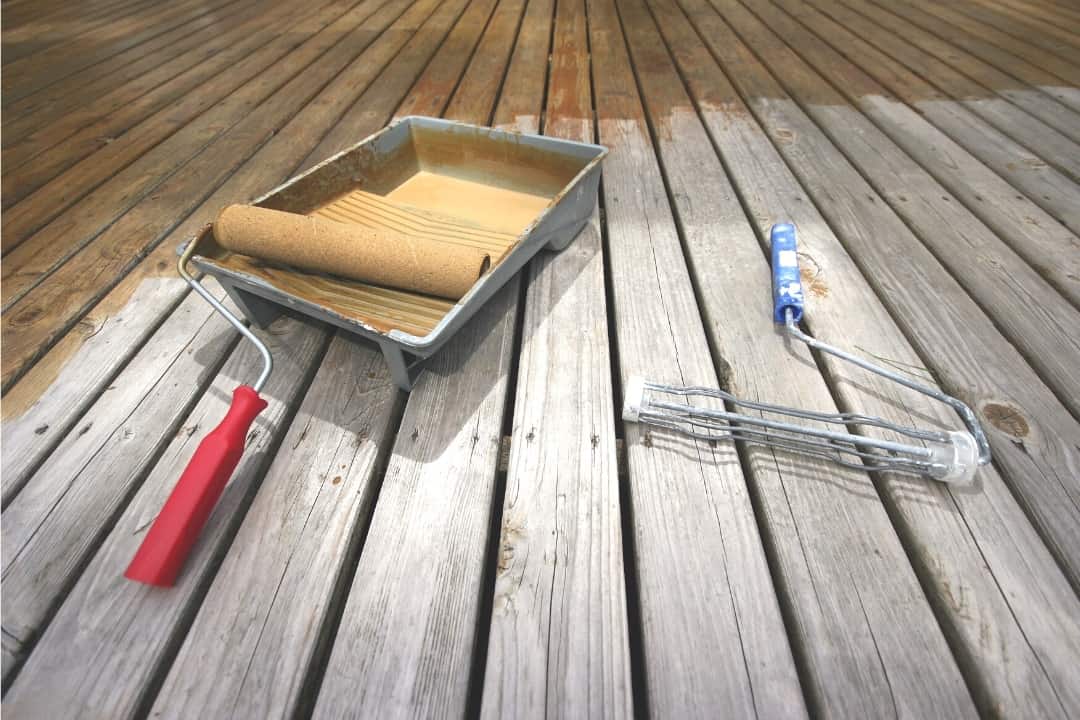
With your deck prepared and the right stain chosen, you’re set to initiate the staining process. Stain application techniques can considerably impact the final outcome.
You can apply the stain using a brush, roller, or sprayer. The preferred method is brushing, as it works the stain deep into the wood fibers. For even penetration and to work the stain into the wood grain, back-brushing is recommended when using a roller or sprayer. Remember to wipe off any excess stain to prevent sticky, shiny spots.
Maintaining and Restaining Your Deck
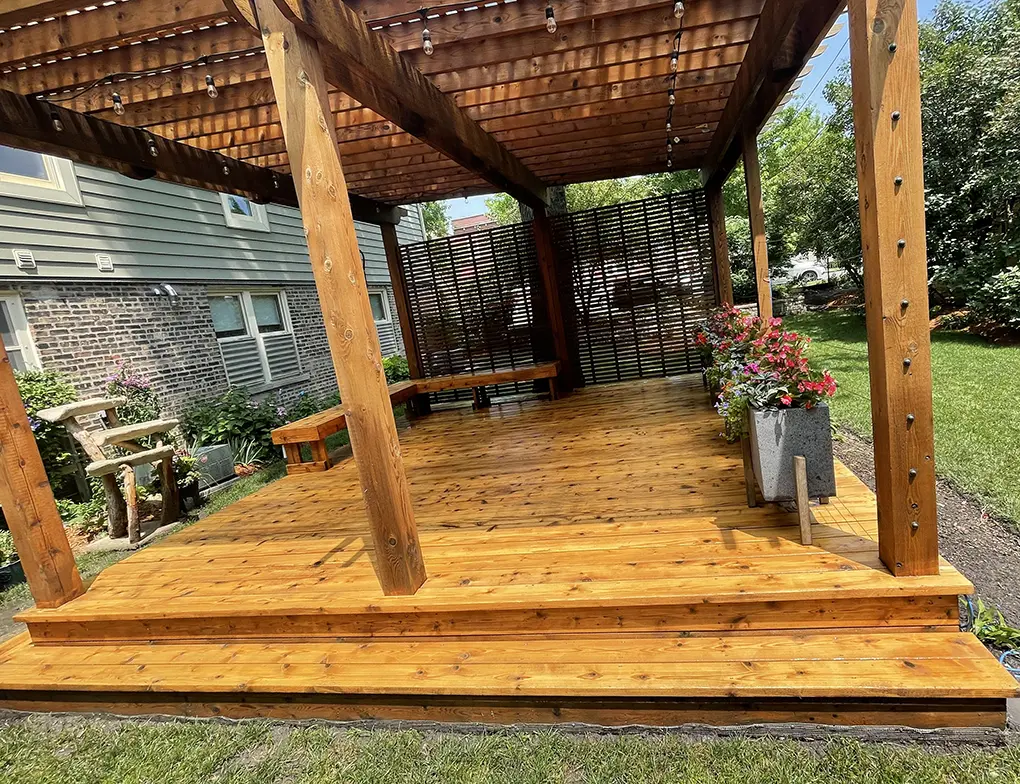
Your deck requires regular maintenance to retain its beauty and durability, even after successful staining. Regular maintenance entails restaining every 2-3 years and addressing any signs indicating the need for restaining.
Signs that it’s time to restain your deck include:
- Fading and peeling stain
- Wood absorbing water
- Cracking wood
- Mold and mildew growth
- Difficulty cleaning
The longevity of deck stain can range from 2 to 5 years, with factors like weather conditions, maintenance, and foot traffic playing a role in this variance.
Professional Assistance for Deck Staining

As a general rule, staining a deck can be a DIY project, but availing professional assistance guarantees a job well done, saving you time and effort when you decide to stain a new deck.
Professionals leverage their in-depth knowledge to:
- Apply quality stains and paints suitable for your deck’s composition
- Address any underlying deck issues before applying finishes, contributing to the overall quality and longevity of the work performed
- Provide tailored advice on the best types of stains, colors, and sealants, ensuring a customized approach suited to your deck’s requirements.
Conclusion
Various factors determine the critical aspect of staining your new deck’s timing, including the wood type, weather conditions, and the preparation process. Adhering to the guidelines outlined in this post will help ensure your deck’s beauty and longevity. If you’re uncertain or prefer a hands-off approach, seeking professional assistance is always a sensible decision.
Frequently Asked Questions
How long should you wait to stain a new deck?
You should wait about 30 days before staining a new deck to ensure the wood has dried thoroughly. To test if the wood is ready, pour a little water on the wood and see if it absorbs.
What happens if you stain a deck too soon?
Staining a deck too soon can result in the stain and sealant not penetrating the wood properly, leading to reduced protection from weather damage. It’s important to allow the wood to dry before staining.
Does a new deck need 2 coats of stain?
Sometimes it’s recommended to apply two coats of stain to a new deck for better coverage and a more even finish. It’s best to seek a professional opinion on this.
How often should I restain my deck?
You should restain your deck every 2 to 3 years for regular maintenance.

